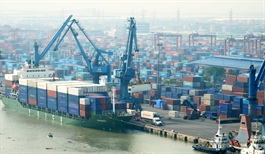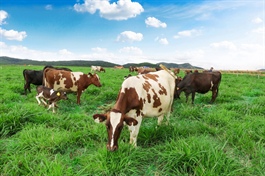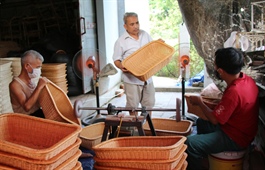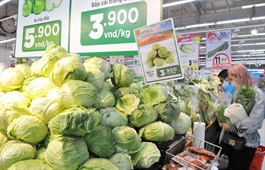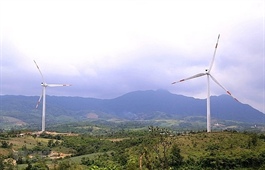Aviation industry has to cut staff to survive
Aviation industry has to cut staff to survive
Apart from cutting costs and reducing salaries, many airlines have had to reduce their workforce in the difficult context of the COVID-19 pandemic.

The orders to restrict flights or social distancing to prevent the spread of the COVID-19 pandemic caused many international and domestic routes to close. The tourism industry is frozen and the demand for passenger transportation declined, causing severe difficulties for the aviation market.
After the first reports of the virus, Vietnamese airlines took the initiative and optimised the use of resources. National carrier Vietnam Airlines has offered a series of solutions to reduce costs.
They have re-organised production in accordance with the narrowed market, restructuring and reorganising labour.
Vietnam Airlines reduced its ground workforce by a third in the first six months of last year. They also stopped the use of expatriate pilots, and expatriate and outsourced flight attendants.
In April 2020, when the pandemic was at its peak, the country implemented social distancing, 50 per cent of employees of Vietnam Airlines had to take unpaid leave and all employees’ salaries were reduced.
In order to ensure the safety of workers, preserve resources and to be ready to grasp the market when it recovers, Le Hong Ha, General Director of Vietnam Airlines, told Thoi Bao Kinh Te Viet Nam (Vietnam Economic Times) online newspaper that they implemented policies of unpaid voluntary workers, shift patterns or part-time work, in order to adjust the scale and manpower costs.
A salary report in 2020 showed that pilots' salaries were cut by more than 50 per cent over the same period in 2019, while a plan to increase pilots' salaries periodically had to be cancelled.
The average salary of flight attendants and ground workers is estimated to have fallen by nearly 48 per cent and 44.5 per cent, respectively.
Instead of giving Tet (Lunar New Year) bonuses in cash, many Vietnamese airlines provided employees with airline tickets and vouchers.
A report by the General Statistics Office showed that although there was a seven-day Tet holiday in February and a festive month, domestic and international tourists to Viet Nam in February were estimated at nearly 11,000 arrivals, down 38.3 per cent over the previous month and down 99.1 per cent over the same period last year due to the influence of COVID-19.
The above figures show a sharp decline in the tourism industry, seriously affecting the operation of the airline industry.
In addition to the declining number of flights and international passengers, COVID-19 has a direct impact on the business results of airlines and airline service companies.
Vietnam Airlines saw a net loss of nearly VND11 trillion (US$478 million) last year.
Vietjet also announced poor business results. It recorded a loss of VND1.57 trillion from its core business. However, thanks to boosting international cargo transportation and other earnings, Vietjet still had net profit of VND70 billion last year, among the few airlines still turning a profit.
Not only airlines, but companies providing airline services also could not avoid losses or declines in profits.
Specifically, Noi Bai Catering Services (NCS) lost VND52 billion, while Taseco Air Services JSC (AST) lost VND54 billion.
Airports Corporation of Viet Nam (ACV), a unit that manages and operates more than 20 airports across the country, recorded a pre-tax profit of nearly VND2.1 trillion, a sharp decrease of nearly 80 per cent compared to 2019.
According to a report on the aviation industry announced by BOS Securities Corporation, the industry has not yet been able to strongly recover.
The driving force for this year’s growth is still in domestic transport and international flights, which are resuming at a slow pace.
It is expected that new international flights will be fully resumed after October this year, and the number of new international passengers will recover to a level as before the outbreak by the first quarter next year, said BOS.
It is estimated that the COVID-19 pandemic has made the world aviation industry suffer a record loss of about $100 billion in the 2020-2021 period.
Weekly reports of IATA show that the future of the world aviation industry continues to deteriorate and is not expected to change positively until 2022.
It is forecasted that the aviation industry will recover 15 - 20 per cent in the first half of this year. However, it is not until the first half of next year that the industry profit growth can begin to recover thanks to the resumption of international routes and growth in air freight traffic.







